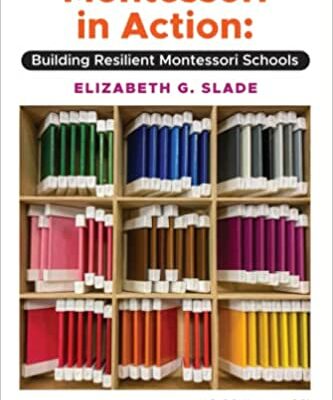Reviewed by Lorna McGrath

Here and There
Written by Tamara Ellis Smith Illustrated by Evelyn Daviddi
Ivan’s parents split up and are living in separate houses. Ivan didn’t like that he had to go here and there. He didn’t think he could be happy and himself with his parents apart. It took a little time and some adjustment for Ivan to realize that love and happiness could be shared; that love and happiness could be both here and there. It’s important for children to know that families can change and be structured in different ways. Time helps. Love helps. And some things will be held in common here and there.

The Honeybee
Written by Kristen Hall and Isabelle Arsenault
This is a beautifully illustrated and written book about the life cycle of the honeybee. It is quite colorful, and the illustrations
are soft and fairly realistic. The author and illustrator take you from summer, when flowers are in full bloom everywhere; to fall and the work to be done in the hive; to winter, when everything slows down; then spring, when the world awakens, and the honeybees start collecting the pollen and the nectar again. Much of the text is rhyming, and young children will love the gentle flow of the words. I had fun reading this out loud and using my voice to highlight certain words and sounds. You can, too. I think it’s important to let your child know that honeybees are not aggressive. They only sting if they (or their hive) are disturbed. They have a lot of work to do so they don’t have much time for us humans! This is a book that is appropriate for 3–6-year-olds.

Amazing Bees
Written by Sue Unstead
I just discovered that DK Publishers has a reading series. As always, this book is beautifully illustrated with photos of real honeybees, flowers, honeycombs, and all the other things that are part of a honey bee’s life. Amazing Bees is a Level 2 reader. The print is nice and big with just the right amount of information for an emerging reader. I am in love with this book and am now ordering a couple of books from each of the levels to see how they progress. I trust that I will be just as pleased with other books in this reading series. This is a great addition to a home or school library. You can purchase books in this series from amazon.com and probably other booksellers as well.

The Potential in Every Child
Written by Gavin McCormack Illustrated by Iris Villarrubia
Parents will find this book to be a quick and easy reference for everyday living practices with their child. Gavin McCormack has boiled down one-hundred ideas that are in alignment with Montessori philosophy for parents. The ideas are mainly for elementary-age children, and some are for children in the early childhood stage. Then some ideas can be used with children from early childhood through the elementary years and beyond. A few examples are: “Give your child the responsibility to take care of their things.” “Spend one night per week walking and talking. Look at the moon and discuss big-picture ideas.” “Do not replace things that get broken. Learn the value of money and repair things together.”
On each page, the author writes the main idea and then explains the value of practicing it with your child, the family, or the larger community outside your family. Each idea has a two-page spread with an illustration on one page and the idea and value on the other. The illustrations are in color and in a style similar to what a child might draw.
Parents may appreciate the brevity of the content in this book, as life can get so full and time is precious. It can be found on most online booksellers.

Big and Small
Written by Britta Teckentrup
This is a little board book for your infant or toddler. There is one quite realistic, colorful picture and one word on each page. Pages that are opposite each other in the book are opposite sizes. As you read this book together, your child will increase their vocabulary as you identify the picture images and begin to get some sense that there is a difference in the sizes of things. This is a difficult concept for a little one to really understand from a two-dimensional picture. However, you can put together an activity using objects that show the same concept in a three-dimensional way. For example: a big ball and a small ball; a big spoon and a small spoon; a big stuffed animal and a small stuffed animal; etc. Have fun reading this with your child!

Think Circles!
Written by Karen S. Robbins
I was pleasantly surprised when I opened this book for young children. I was expecting a book that has too much to sort out on a page, is visually distracting for young children, and could easily be torn or damaged by accident.
The author of Think Circles! isolates each illustration on the pages to answer the hint. For example: On page 1, the hint is “Bouncing Circle” and the question is “What can it be?” On the opposite page, there is a hidden object with just one opening to view part of the pictured answer with the word, “Think.” Adults get to have fun with this, too, as they read the words to the child and maybe, if needed, add another hint to play along with “thinking” about what the hidden object might be. I love that she invites the child to “think.”
Ms. Robbins also adds in another level of difficulty by adding objects to each page. So, on page 1, there is just one hidden object. On page 2 there are two hidden objects. On page 3 there are three objects, and so on to 10. On each page, there are the corresponding openings, so that children can count the openings and then count the objects when they open the flap to see the answer.
As a teacher, I would present one concept at a time. I would either introduce the book as a problem-solving lesson or as a counting lesson but not both at the same time. Both concepts are higher-level thinking. Either could be presented first. I would probably introduce the “thinking” concept first just because I like it.
The pages are quite sturdy, so that young children can use these books without accidentally damaging the books, assuming the adult has given the child a lesson on carefully turning/opening pages in a book. That’s important since we want children to be successful as they use books and other activities. The illustrations are colorful, attractive, and quite realistic.
There are two other books in this series – Think Triangles! and Think Squares! These books would be enjoyed by children 3-6 years old.

Think Farm Animals Think Zoo Animals
Written by Karen Robbins Illustrated by Rachael Brunson
Karen Robbins has written two sturdy books for two- to four-year-old’s about animals: Think Farm Animals and Think Zoo Animals. The pages can be easily turned, and the flaps easily opened by young hands. The illustrations are colorful, visually pleasing, and realistic.
Each book is set up similarly with a hint and a question on the left page and an opening that allows the child to see part of the animal on the right page.
For example: In the Farm Animals book on the left page, it reads, “I have a swishy tail and say ‘Moo!’ What can I be?” And on the right page, an opening shows a white and black tail with the word “Think” written below. I love that!
Remember children at this young age are still developing impulse control. The adult can help them with that in a fun way by saying something like, “Hmmmm. I’m ‘thinking’ about animals on a farm. Do we know a song about that? ‘With a moo-moo here and a moo-moo there.’ What could it be?” All the while holding the flap closed as the adult and child “think” together. You could even say to the child, “Let’s keep the flap closed so that we can ‘think’ for a minute.”
Lovely books for young children. I wish there were more!

The Art of Talking with Children: The Simple Keys to Nurturing Kindness, Creativity, and Confidence in Kids
Written by Rebecca Roland
Conversations can help provide learning opportunities, including developing essential listening skills and increasing vocabulary. Often, what we think of as a conversation with the children around us is more a session of us, as the adult, either asking for information or providing information,. We do not always get to the why of the information. When we get to hear a child’s “why,” it feels like being given a gem. This book can help us as adults learn skills that allow us to get to that why more often.
Rebecca Rolland is an oral-language specialist, a Harvard faculty member, and a parent and brings all those roles to this book. Each chapter explains why one would want to have different types of conversations with children and adolescents, provides evidence for the science, and shares anecdotes from her family and students. The combination helps make this a book you can apply to your life, even in the first chapter. She explains how you can help develop empathy, confidence, creativity, and social skills through conversations.
I would recommend this book for parents of young children through teens as well as teachers and all school personnel. It can be read all at once, one chapter at a time with practice before reading the next, or in the order needed based on family circumstances. It is certainly a book you will go back to again and again to develop and refine conversational skills that may help in talking with adults as well as talking with children.
Reviewed by Cheryl Allen




